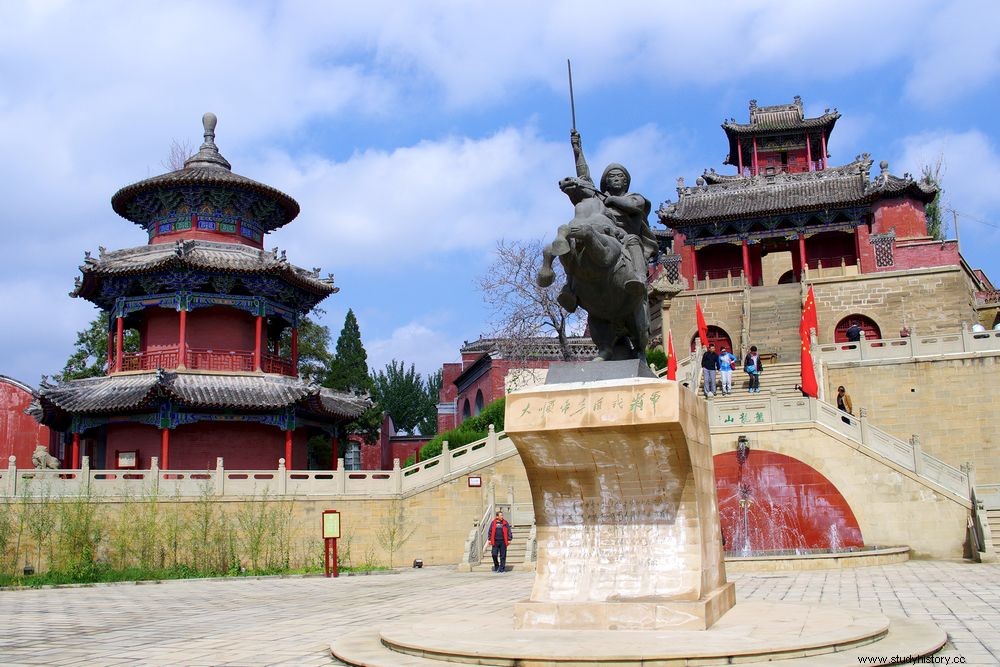Chinese revolutionary, Gao Guiying (? – 1647) revolted against the Ming dynasty with her husband; she led all-female troops into battle in the early 17 e century.
Meeting with Li Zicheng

Since 1368, the Ming Dynasty, the last Han-dominated Chinese dynasty, has ruled China. From the end of the 16 e – from the beginning of the 17 e century, the Ming dynasty experiences financial difficulties, aggravated by popular revolts, sovereigns unfit to govern, the revolt of the Jurchen tribes which will give birth to the Qing dynasty, episodes of drought, epidemics and famines. These financial difficulties push the authorities to increase taxes heavily, in particular to finance the war effort against the Jurchen tribes. Crushing taxation and famines cause many insurgencies.
It is in this context that Gao Guiying was born (at a date which is not known to us) and grew up in the Xian of Mizhi, in Shaanxi in northern China. In 1627, she met Li Zicheng, son of farmers, blacksmith and revolutionary. The popular story goes that Li Zicheng, wanted by the authorities for the murder of a gang leader terrorizing the residents of Yan'an City, was hidden by Gao Guiying's brother in their father's house. Brought together by the same spirit of revolt against oppression, Gao Guiying and Li Zicheng marry and together undertake to train the local population in martial arts.
Revolt
At the time, Shaanxi was plagued by disease and famine, amplified by the heavy taxation put in place by the Ming dynasty. In 1630, Gao Guiying and Li Zicheng joined a group of rebellious peasants led by Gao Yingxiang, whose respect they won by advocating the sharing of land and the abolition of certain taxes. While Gao Yingxiang is elected “king”, Li Zicheng is named “general”; he will take the title of king on the death of Gao Yingxiang in 1636.
Over time, their troops were joined by scores of peasants stricken by famine, until they reached a strength of 30,000 men, with whom they attacked and killed government officials. Their role in the revolt quickly separates Gao Guiying and Li Zicheng; Gao Guiying recruits, trains and leads all-female units, with their own hierarchy made up of female officers. Li Zicheng, for his part, swells the ranks of the army by recruiting peasants.
The revolt was on such a scale that, coupled with the attacks of the Jurchen tribes (future Qing dynasty), it led to the collapse of the Ming dynasty. In 1644, Li Zicheng and his troops captured Beijing. Rather than be captured, Chongzhen, the last emperor of the Ming Dynasty, hanged himself. Li Zicheng proclaims himself emperor, and Gao Guiying becomes empress. A title that she would retain only briefly:the following year, the Jurchen tribes, or Manchus, defeated the army of Li Zicheng who died in battle, took Beijing and established the Qing dynasty.
Protector of the Ming dynasty
Widowed, Gao Guiying declares herself the greatest adversary of the Qing who overthrew and killed her husband. Changing allegiance, she looks to her enemies of yesterday for her allies of today. The survivors of the ruling Ming dynasty family having retreated to southern China to rule as the southern Ming dynasty, it rallies with those it hitherto fought against the Qing.
Obtaining a command title, Gao Guiying is appointed protector of the new Ming dynasty. She accomplished feats in battle, and led the fight against the Qing dynasty until her death in 1647.
